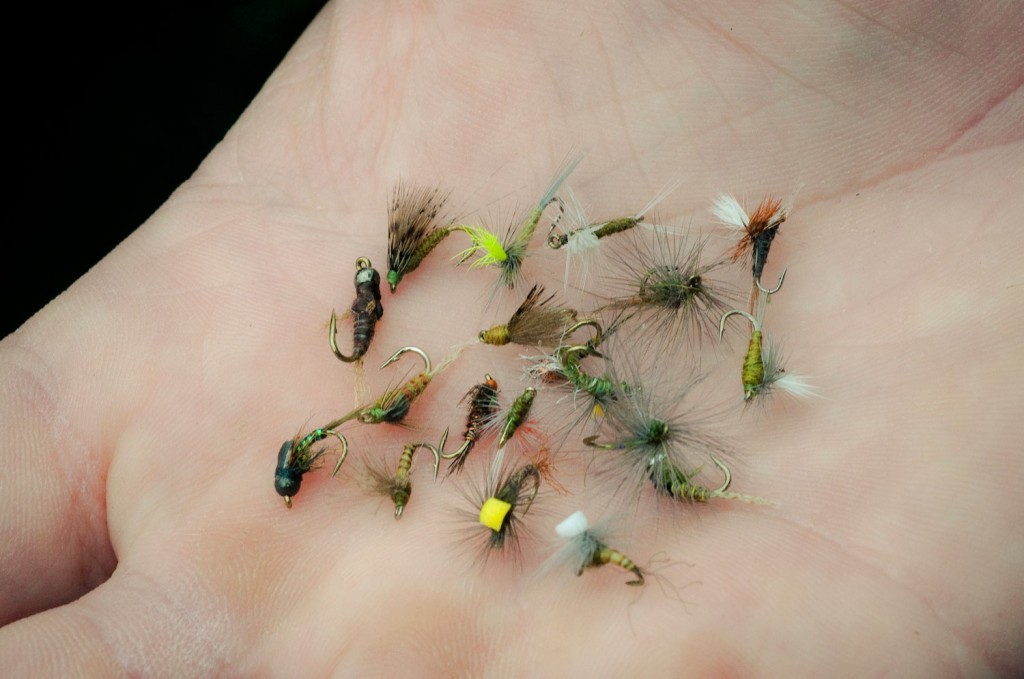By Kent Klewein
Have you ever been standing in the river watching a big hatch unfolding with rising fish all around you, but for some reason you can’t get the feeding fish to eat your flies?
Covering and owning a hatch starts with you first carrying the right fly patterns. When you know you’re going to encounter a specific hatch on the water, always carry multiple variations (colors, sizes) and stages (nymph, emerger, dun, spinner) to make sure you’re covered. Trout can get really picky during selective feeding.
This very situation happened to me last year running a guided float trip during an intense sulphur hatch. There was yellow everywhere, and fish were in a feeding frenzy, but the trout wouldn’t eat any of my sulphur patterns I tied on for my clients. Even my CDC go-to patterns that always work, were shunned by the feeding trout. I finally found a sulphur pattern after my seventh try that the trout consistently liked, and it saved the day. It ended up being nothing special, just a dun with in a slightly different color shade. The remainder of the float trip all I could think about was how important it was that I had so many different sulphur imitations on hand. It would have been a long quiet drive back if my clients witnessed an epic hatch with perfect conditions, and we ended up striking out on the water.
Your standard parahcute style dun with a small nymph dropper off the back will not always work. Below are some examples of other fly pattern options for rounding out your fly box and owning a hatch:
Dries
Parachute Style (with and without trailing shuck)
Traditional Style (palmered hackle)
Thorax Style (Palmered Hackle with hackle trimmed off on the bottom so pattern rides low on the water)
No Hackle Style (Just like it sounds, no hackle is used in the recipe)
CDC Style (CDC is substituted for hackle or feather for tying the wing. There subtle non bulky patterns that do a great job at imitating naturals)
Emergers & Nymphs
Carry emergers that incorporate soft-hackle as well as CDC and are intended to float both on the surface film as well as just below the surface. You should also carry a nice variety of nymphs with and with out beads as well. Some should incorporate some flashy material while others should be more subtle and natural.
Rigging & Technique
Always experiment with your rigging and try out different pattern and style combinations. If your parachute isn’t working try a different style dry fly. If a nymph dropper off the back of a dry isn’t working, change it out with an emerger instead. By changing up your rig you can figure out what the fish are keying in on. In layman terms, what style or type of pattern the fish prefer. Don’t overlook adjusting the length of your dropper either. Sometimes a short dropper (10-12″) will work great, while other times you’ll find the key to getting bites is having a dropper that’s 24-30″ long. Most of the time a nice drag free dead drift will be the key to success, but there are days where the trick is a nice slow swing at the end of your drift, followed by a couple rod twitches.
(Carry patterns in different sizes and color shades. Remember the color of your flies can change once they get “wet”)
Keep it Reel,
Kent Klewein Gink & Gasoline www.ginkandgasoline.com hookups@ginkandgasoline.com Sign Up For Our Weekly Newsletter!

It seems that every stream/river has a slightly different color from each of them. There is a publication in the Mid-Atlantic called ” Mid Atlantic Fly Fishing Guide (maffguide@live.com), they post the hatches for many streams in the area. That said, that doesn’t mean that the hatch from one stream won’t be a different color/size than a stream nearby.
Thank you for posting this of value message Kent
Nice job, Kent. I am a believer in soft hackle flies as dries, emergers, and wets, using floatant and Xink and the length of the dropper to put the same fly in different places in the water column.
I would add a couple things: Try going a bit smaller than the naturals you see if you are having limited success with a given fly but difficulty with consistently fooling the fish. Also, I have tried slight movement of the fly with some success and also altering the presentation so the swing occurs where the fish are taking as opposed to drifting through the fish. Some of these things are counterintuitive, but when the conventional drag free drift fails you, changing things up can help as you aptly point out.
This is a very helpful thread. Ralph A., what soft hackle patterns do you like to use as dries?